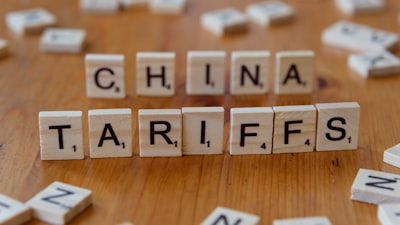Introduction: The China–EU Economic Chessboard
As the world shifts into a new era marked by economic uncertainty and deglobalization trends, the relationship between China and the European Union (EU) has come under increasing scrutiny. In July 2025, following high-level meetings in Brussels between China’s Foreign Minister Wang Yi and EU leaders, both sides placed blame elsewhere for ongoing economic headwinds. But beneath the diplomatic statements, key issues like rare earth exports, trade dependencies, and fair competition dominate headlines and shape the future of global industries.
China–EU Economic Relations: A Delicate Balancing Act
The diplomatic exchange between China and the EU underscores a broader debate: How have Chinese trade policies and strategic resource controls (such as rare earth elements) impacted Europe’s economic health? And what does this mean for supply chains vital to technology, automotive, and renewable energy sectors?
Key Issues Fueling China-EU Tensions
- Rare Earth Export Restrictions: Beijing’s controls on rare earth minerals — essential for electric vehicles, wind turbines, smartphones, and defense systems — have ignited urgent calls in Brussels for more open and predictable access.
- Distortive Trade Practices: The EU has expressed mounting concerns about subsidized Chinese industries, market access barriers, and what it sees as unfair competition.
- Economic Dependency: As Europe races to secure alternative sources of critical materials, questions swirl about the risks of overreliance on Chinese suppliers.
Why Rare Earths Matter in 2025
Rare earth elements (REEs) are central to the clean energy transition and technology revolution. China currently controls over 60% of global REE production. With Brussels urging for freer access, the battle for these strategic minerals has turned into a game-changer for European industry and technological sovereignty.
Key rare earth applications include:
- Battery technology for electric vehicles (EVs)
- Permanent magnets in wind turbines
- Lasers and sensors in smart devices
Emerging Trends: Supply Chain Resilience and Diversification
The EU’s push for greater supply chain resilience is already leading to multi-pronged strategies:
- Investing in Domestic Mining: Countries like Sweden and Germany are exploring new mining and recycling projects.
- Expanding Trade Partnerships: Deals with resource-rich countries outside China, such as Australia and Canada, are picking up pace.
- Circular Economy Initiatives: Recycling and reclaiming rare earths from old electronics is now a major research focus in Europe.
Is a Trade War Looming or Just Rhetoric?
While both sides have stressed the importance of avoiding confrontation, trade disputes over green technology, EVs, solar panels, and raw materials continue to escalate.
Searches are rising for:
- "EU rare earth strategy 2025"
- "China EU trade war updates"
- "How to invest in rare earth metals"
- "Alternatives to Chinese rare earths"
What’s at Stake for Consumers and Businesses?
- Innovation: Delays in access to rare earths could slow Europe’s green tech rollout.
- Prices: Trade barriers often mean higher prices for hi-tech goods and renewables.
- Geopolitics: The China-EU dynamic is reshaping global alliances and technological standards.
FAQ: China-EU Trade and Rare Earths
Q: Why are rare earths so important right now?
A: They’re essential in many cutting-edge technologies and Europe’s energy transition.
Q: Can Europe reduce its reliance on Chinese rare earths?
A: It's making progress through domestic projects and new partnerships, but this will take time.
Q: How will these tensions affect consumers?
A: Consumers may see higher prices or slower access to the latest green technologies if supply chains are disrupted.
Conclusion: Navigating the New Economic Order
The China-EU relationship in 2025 is a complex web of competition, cooperation, and hard bargaining over strategic resources. As Brussels urges greater access and China pushes back against blame for economic woes, businesses and policymakers must adapt rapidly. For readers wondering what’s next, staying informed on supply chain resilience, trade policy, and technological shifts is now more essential than ever.
For more on this topic, explore:

Comments
No comments yet. Be the first to comment!